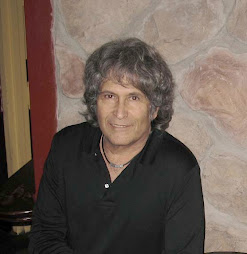When discussing the questions of what did primitive humans eat, we have to define "
primitive"...there is a difference between the diet of humans of 2,000,000 years ago with the diet of humans of 250,000 years ago. The former, being closer to primates , based on time, not physiology, are a good starting point. But first a word about primate diets...our closest ancestors.
Much of the following information can be found on the site of Vegetarian Resource Group:
In general our primate ancestors were primarily plant eaters (as they still are) Some apes eat fruit only (frugivores, like Gibbons) Gorillas are mostly vegetarian, eating more greens and less fruit. Orangutans are full vegetarians. Bonobos subsist on a pure plant based diet. A completely RAW restaurant in NYC is named after these primates, as a recognition of the
the restaurant offers. I've been there many times and love it! (
www.bonobosrestaurant.com) Chimpanzees, our closest relatives, are supposedly 95% vegetarian. They have been known to kill other animals and even other primates, but some argue this is not for nutrition but more for territoriality or show of force.
So, are ancestors in the primate world are , for the most part, plant eaters.
But humans have eaten meat and continue to do so, whether it's healthy or not. Humans do fall into the category of Omnivore...but are closer to Herbivore in nature. There is some evidence to show that earliest humans were almost fully vegetarians. Before the creation of tools, humans could only eat dead carrion when they ate meat, since humans are very poorly equipped to kill live animals (we can't run fast, we don't have claws, we can't rip flesh with our teeth etc.) It really wasn't until humans learned how to craft clubs and spears and other primitive tools, that the eating of meat increased greatly.
Another well documented website/blog concerning this subject is Vegan Life:
The author shows that while we can tolerate small amounts of meat, we are far more similar to herbivores than to carnivores.
Then there arealways the people who state "But humans have always eaten meat" This is not true. Dr. John
McDougall, (
www.drmcdougall.com) well known plant based doctor and expert on the relationship between diet and disease, has stated, as have many anthropologists, that our ancestors of 4,000,000 years ago ate a mostly vegetarian diet. The hunting and killing and eating of animals is still a fairly recent development in human history. And as I said earlier, humans had to scavenge for meat, and ate mainly
carrion, prior to the use of tools. When they were lucky enough to find the remains of a dead partially consumed animal. And unfortunately, as they were "feasting" they often became prey to the real carnivores who killed and devoured them also. It wasn't until much much later , when humans learned to control fire, that meat eating increased greatly. Some argue that this is "proof" that humans are not true meat eaters...since they couldn't kill meat without tools, and then didn't eat a lot of meat until they learned to cook it with fire...implying that raw meat just wasn't very palatable to our prehistoric ancestors either.
There are classic examples of human physiology that are always brought up to show why we were evolved to eat plants. First there is our stomach acid, which is very low compared to true carnivores which is very high. A lion needs to break down the dead flesh quickly and get it started on it's way through it's body.
Our intestines are very long and convoluted...typical of herbivores. Lions' intestines are short and fairly smooth walled...both features allowing the rotting meat to get out as fast as possible. Our jaw structure is more herbivore also. Herbivores tend to have rotating jaws for chewing , with flat grinding molars. Carnivores have jaws that only go up and down, and most or all their teeth are pointed for tearing and ripping. They chomp off chunks of meat and then swallow the pieces without chewing. Modern domestic house cats do the same. Our teeth that are called "canines" are really NOT true carnivorous canines. It's more of a dental term designating where they are located. Carnivores' canines stick out over the bottom jaw and are fully prepared to rip and tear into flesh. How many people have you seen with canines sticking out like that (other than in vampire movies)?
There are quite a few more physiological examples showing why we favor plants but I won't go into all of them here but will mention a few: saliva, facial muscles, liver, kidney, nails and hooves vs claws,mouth opening to head size, and more)
So , to sum up the above, we are omnivores but with a preference to herbivorous behavior and diet. And , as we will see later in this blog, the more meat we eat, the more unhealthy we become. As John Robbins said in Diet For a New America, you don't get saturated fat and cholesterol and artery clogging ingredients from broccoli and brown rice. We know
meat and dairy can kill us, so is it smart to eat even small amounts of these animal products? Personally I'd rather stay away from the completely. But the rest of society and human civilization seems to have gravitated more and more to an animal based diet, and is suffering the consequences. Just because humans started to eat meat a few million years ago, does not mean they "evolved" to do so, nor is it for the better! (as we'll clearly see later on).

